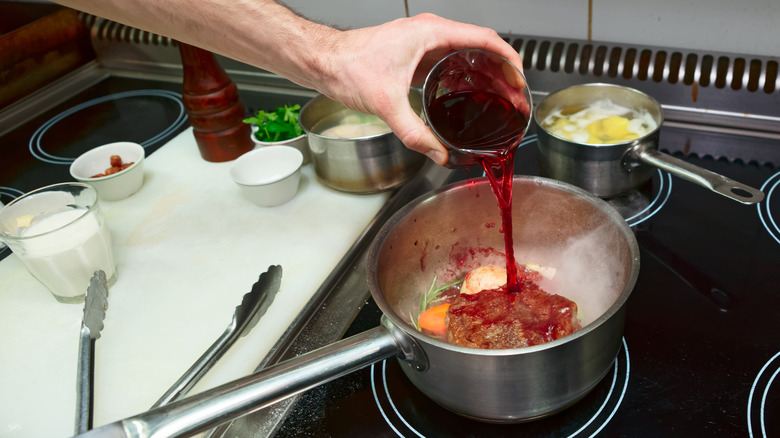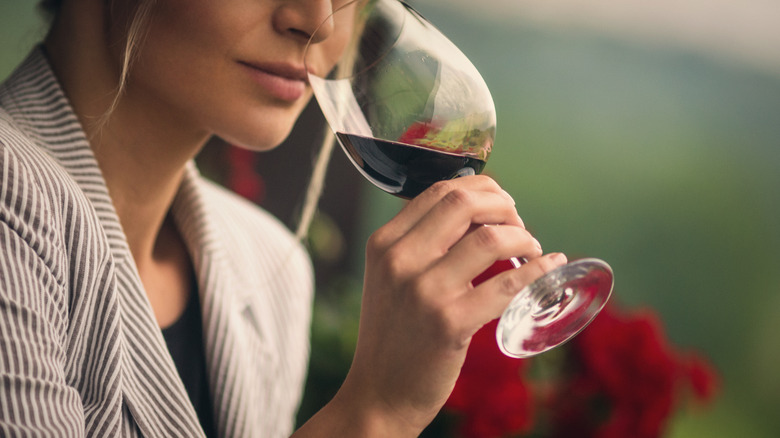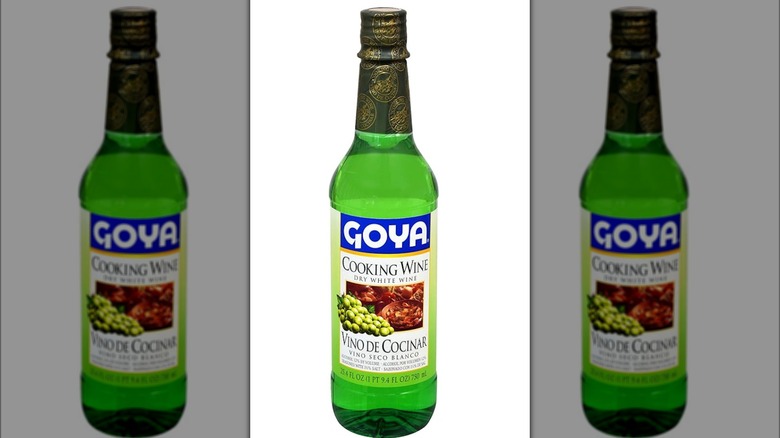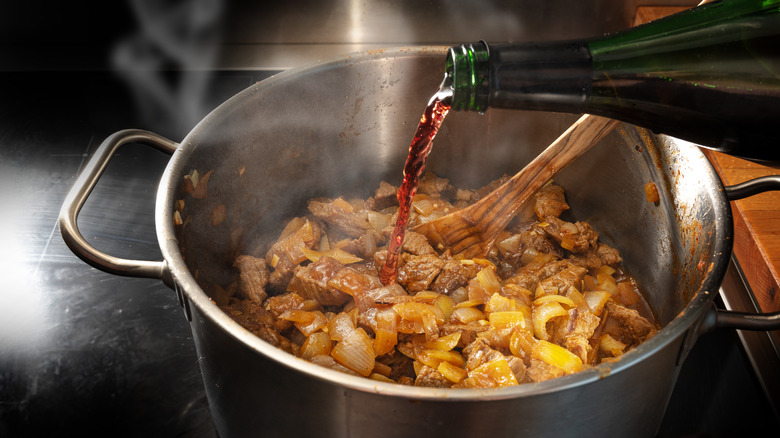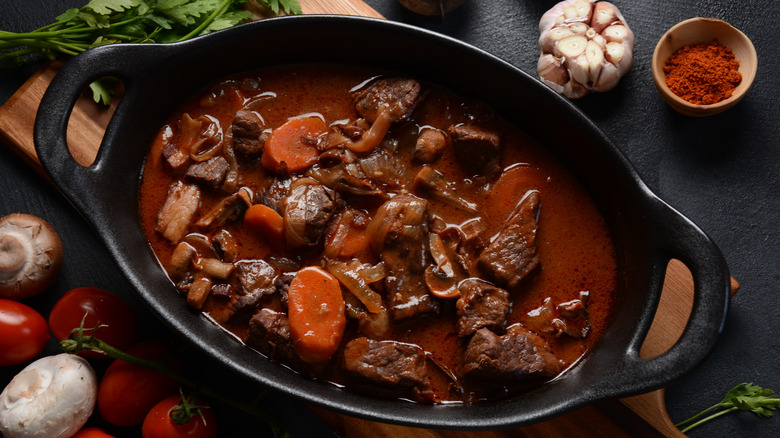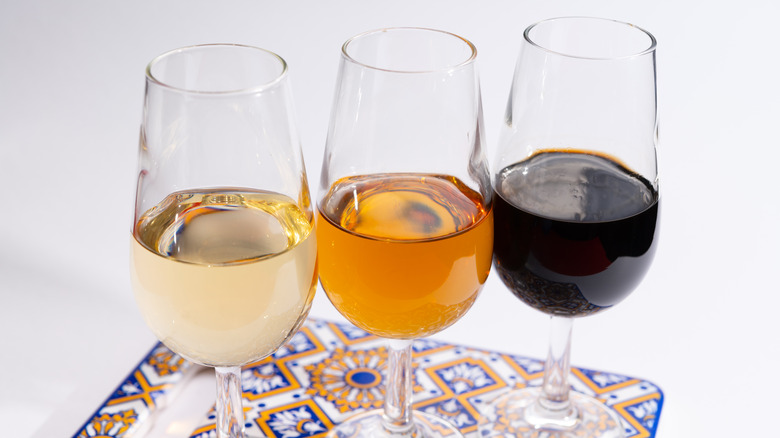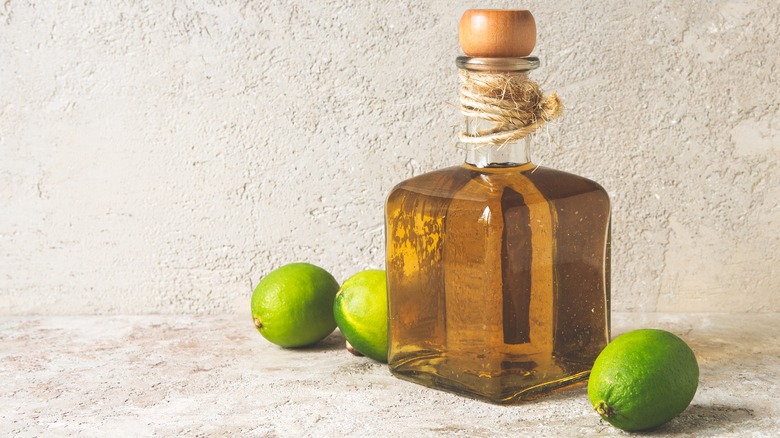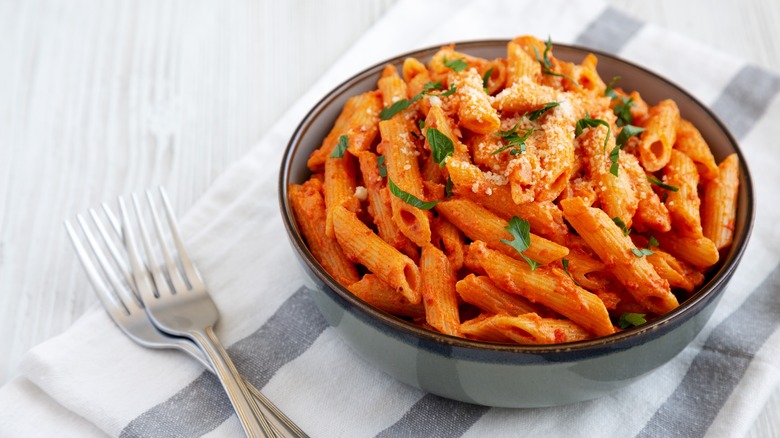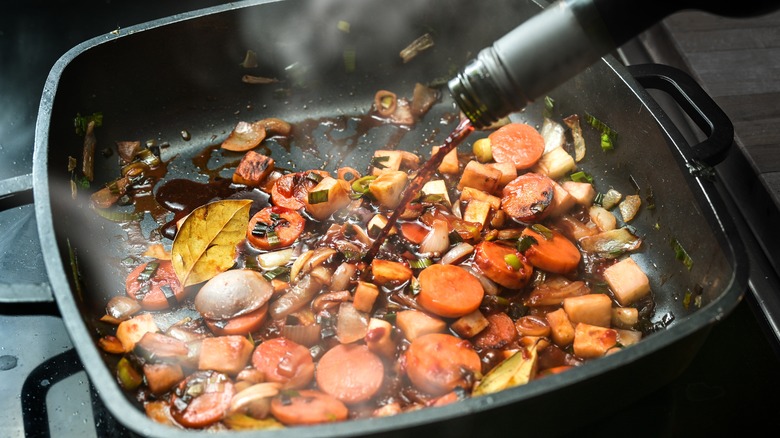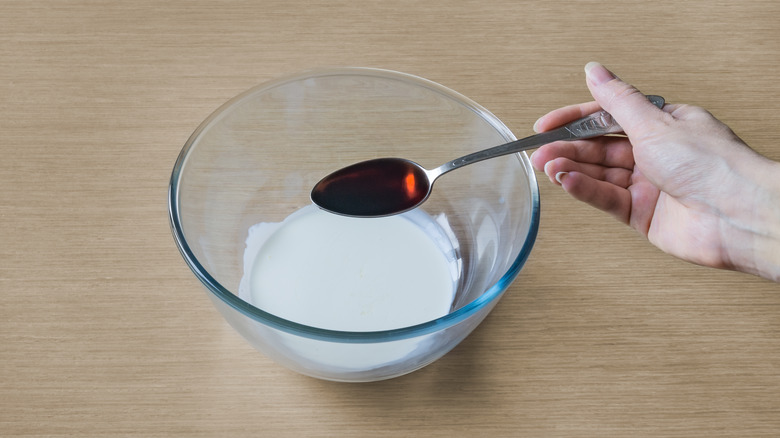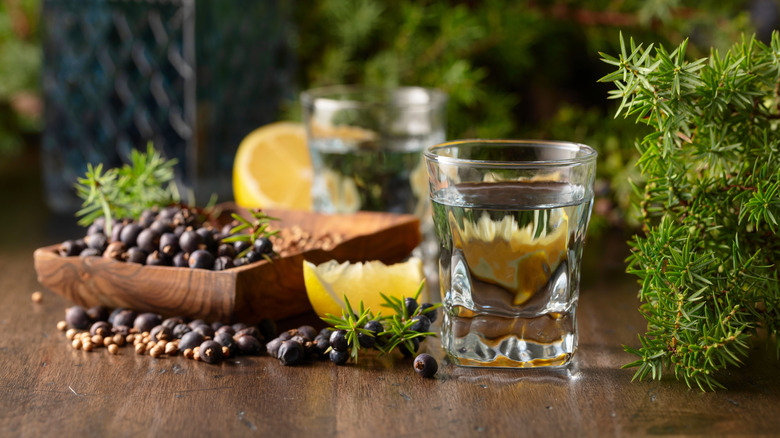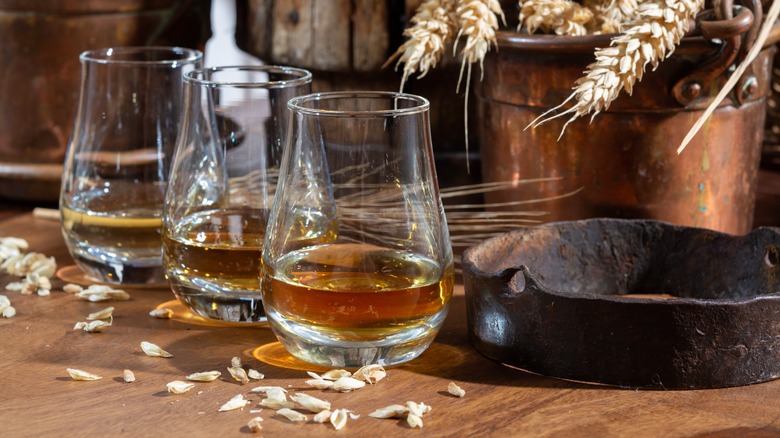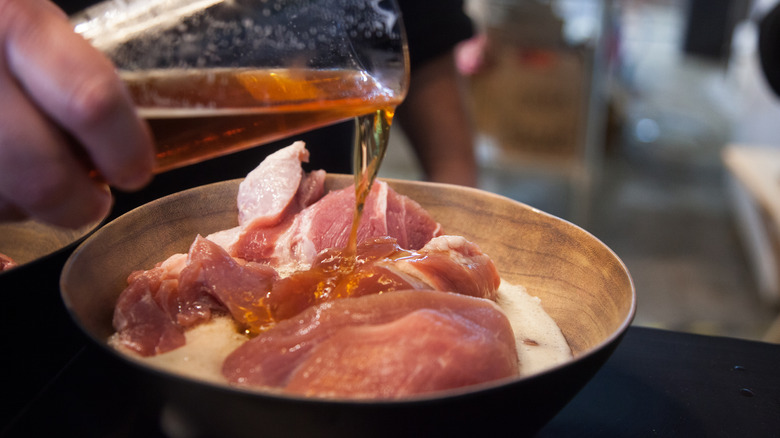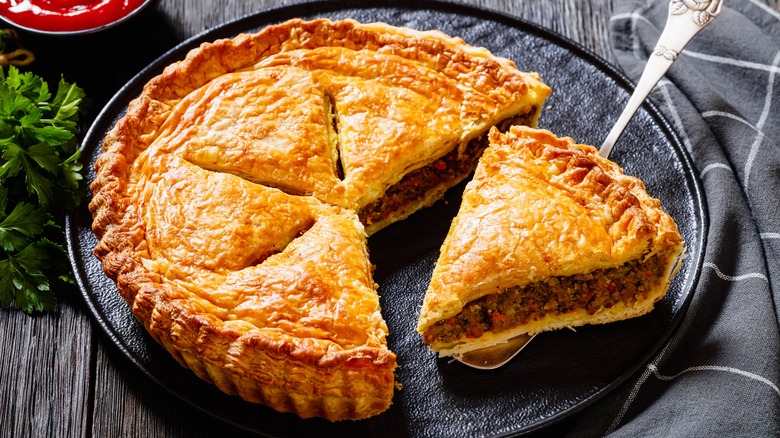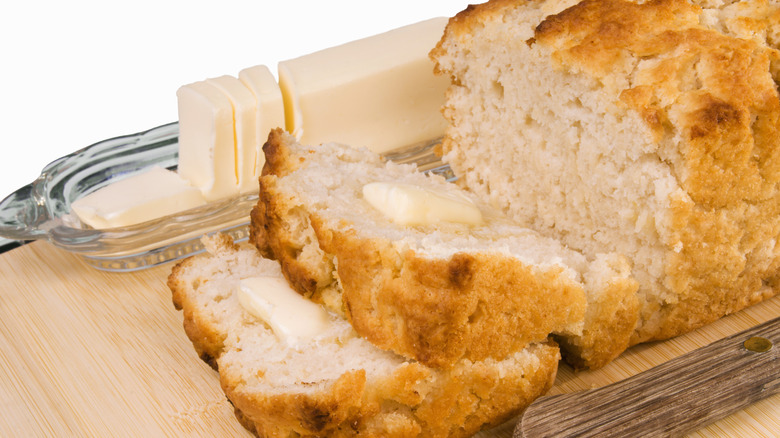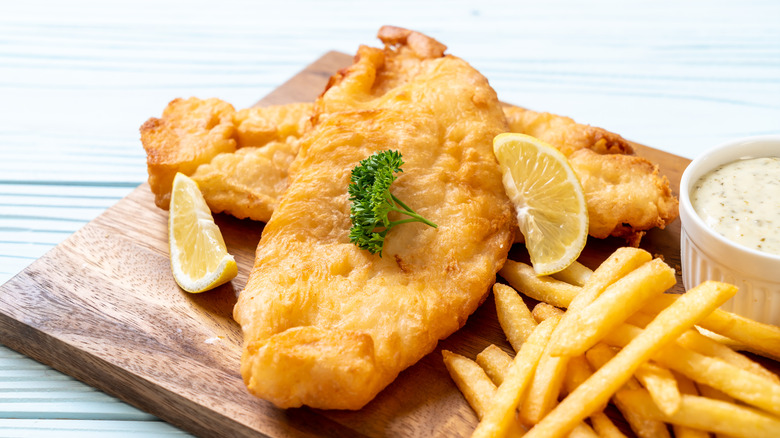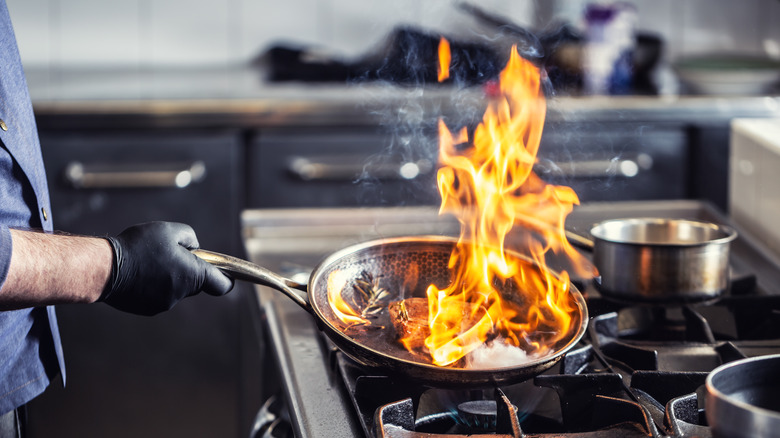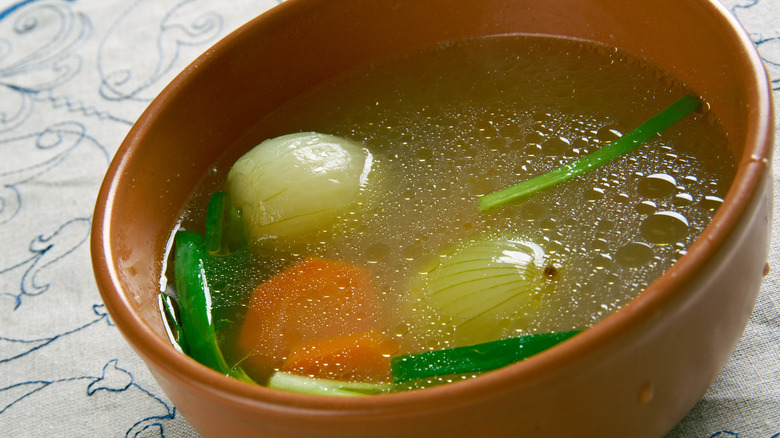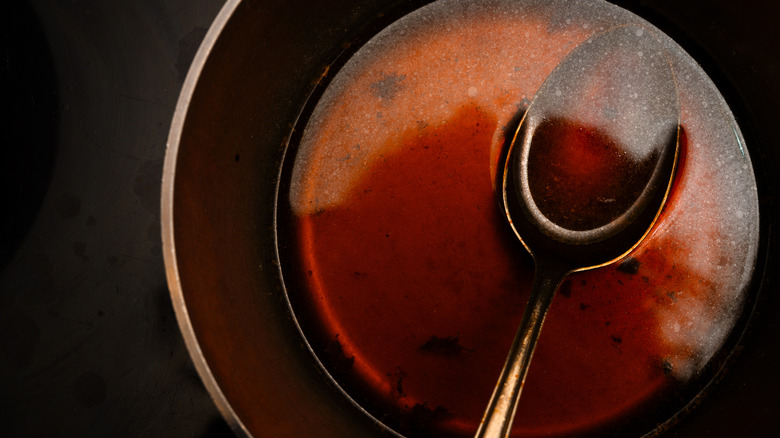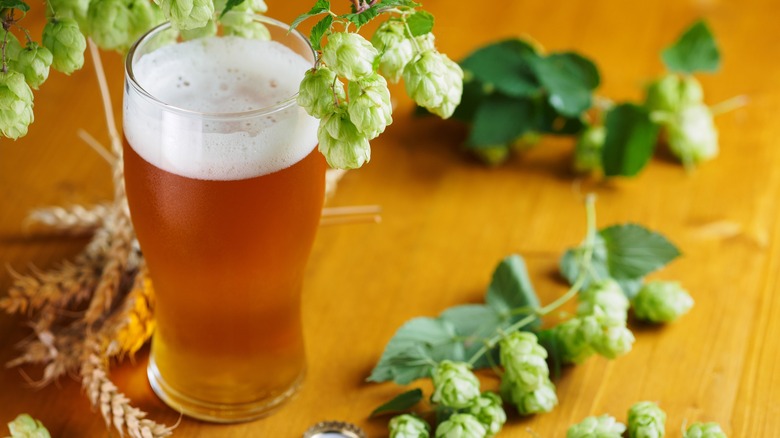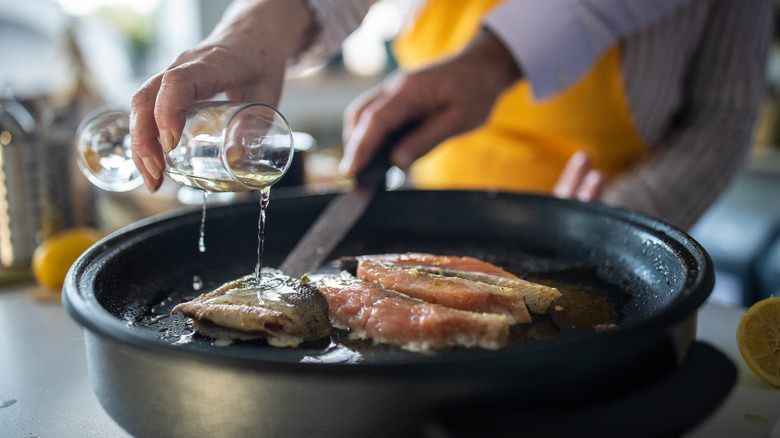A Chef's 20 Best Tips For Cooking With Alcohol
The actor W.C. Fields once famously said: "I cook with wine. Sometimes, I even add it to the food," (via Decanter). Cooking with alcohol involves more than just drinking it along with a meal. It is an integral element in the execution of many recipes. Part art, part science, cooking with alcohol requires finesse, patience, restraint, and know-how to develop the complexity of aroma, flavor, and texture it can confer.
As the chef and owner of a fine dining restaurant for nearly two decades, I have learned a thing or twenty about how to infuse my recipes with alcohol. From sauces and stews to marinades and desserts, I have used all kinds of wine, beer, and spirits. I have learned which types of alcohol complement which recipes, how much to add for the ideal balance, when to add it, and when to skip it. To help you navigate the wide world of cooking with alcohol, I compiled this information into a handy list of my best tips. Read on for the full scoop (or pour), as the case may be.
1. Cook with wine you would drink
While what constitutes a wine you would drink is debatable, there is no question that there are good and bad wines when it comes to cooking. Taste is highly subjective, making choosing a wine you would drink a personal decision. That said, there are some basics to consider beyond avoiding a wine that has turned.
Since sweetness and acidity are the primary ways wine imparts flavor into a recipe, you will want to choose a wine with a modest amount of both. As a dish cooks, these flavors will concentrate, becoming more intense. Similarly, avoid wines that are highly oaked or very tannic. Lastly, this is not the time or place to use an expensive reserve wine. Save that for the meal, and opt for a moderately priced wine to cook with.
2. Avoid cooking wine
When perusing your favorite grocery store, you may come across a bottle labeled "cooking wine" in the aisle where vinegar and other condiments are available. While it may be tempting to pick up a resealable bottle for use for a recipe, skip it. Cooking wine is different from the stuff you'd drink. It is often higher in alcohol and contains added salt, sugar, and preservatives. When reduced during the cooking process, these can leave an unpleasant aftertaste that is salty, saccharine, and metallic.
You are better off purchasing a modestly priced wine, even if you do not use the whole bottle. You can even save the extra wine by pouring it into ice cube trays and freezing it for later.
3. Know that not all of the alcohol cooks off
When you cook with alcohol, not all of it will burn off during the process. The longer you cook alcohol at its boiling point of 173 degrees Fahrenheit, the more it will evaporate. Additionally, the larger the pan you use, the more alcohol will burn off, due to the larger surface area.
The amount of remaining alcohol in a dish can range from around 5-95%. Stews and other slow-cooked dishes (that spend at least two and a half hours cooking) will end up on the lower end of that alcohol range. Flambéed or rapidly boiled sauces will end up at the higher end. When catering to those who are pregnant or breastfeeding, people who are in recovery, or anyone abstaining from alcohol because of religious beliefs or any other purpose, you may want to avoid cooking with alcohol.
4. Be mindful of the color
When cooking with alcohol, you should also consider how beverages with distinct colors will impact the flavor and visual appeal of the finished dish. Generally, the darker the color of the alcohol, the more robust the flavor will be, though this is not always the case. This makes darker-colored alcohol more well-suited to savory dishes, but this depends on what you are cooking. A red wine, for example, may make a delicious poaching liquid for fruit, while a white wine may be perfect for cooking fish or chicken.
Additionally, the darker the alcohol, the more it will influence the color of your dish. These drinks give your food a deep, brown, or maroon hue. For this reason, you will often see that red meat recipes call for red wine, while white meat recipes call for white wine.
5. Add fortified wines to salad dressings or sauces
Fortified wines were invented to help extend the shelf-life of wine. Fortification involves adding brandy or another spirit to wine during or after fermentation, increasing its alcohol content to 17-21%. This increased alcohol content makes fortified wines ideal for cooking, as they can withstand high temperatures and confer complex flavors.
The fortified wines most commonly used for cooking are Port, Madeira, Marsala, and sherry. These range in flavor from sweet to dry, depending on when the wine was fortified and how long it has aged. Most fortified wine is best incorporated toward the end of cooking when it can briefly be heated to evaporate any raw alcohol but retain its flavor. It is also delightful in a salad dressing or sauce, to amplify acidity and add nuance to the taste.
6. Marinade meat in tequila
Among the many types of alcohol that upgrade your meat marinade, tequila is particularly desirable. Tequila, a distilled spirit that is technically a type of mezcal, is made from the blue agave plant. This succulent confers a complexity of flavor to tequila that can range from light, sweet, and fruity to rich, earthy, spicy, and smoky, depending on the type of agave and how long the spirit has aged.
Three kinds of tequila exist that differ in how long the spirit has aged in oak barrels: the young blanco, the medium-aged reposado, and the aged añejo. These can all be a great addition to a marinade, but a modestly-priced reposado has the most bang for your buck. Do not use too much tequila or leave the meat in the marinade for too long, as this can unravel the proteins, causing the meat to become mushy.
7. Use vodka as a binder for sauces
You may have wondered how vodka transforms a simple tomato sauce if you have ever eaten a plateful of penne alla vodka. The answer is more complex than you would imagine. Partly, the vodka provides an inherent sweetness and complexity of flavor that is unmatched by any other alcohol. It also helps to amplify the aromas of the tomatoes in a sauce.
That said, vodka's primary purpose is to help homogenize unlike ingredients, namely acidic tomatoes and fatty cream, allowing them to unify into a cohesive sauce, rather than separating the way oil and vinegar do in a salad dressing. The key is to use restraint in adding vodka. Approximately ¼ cup per quart of tomato sauce is enough to enhance the dish without overwhelming it.
8. Deglaze the pan with alcohol
Deglazing a pan refers to the process during which the tiny pieces of meat or vegetables that get caked onto the bottom of your pan (known as fond), are delicately loosened by the addition of a liquid and scraped up to produce a sauce or gravy, or reintroduced into the finished recipe. While you can use any liquid, alcohol is particularly effective for this.
Alcohol is adept at binding with fat and water molecules, helping to transport the fat and water-soluble compounds more readily, amplifying their flavors when they come in contact with our taste receptors. It also enhances the aroma of a dish by capturing the inherent scent of food as it comes into contact with it in the pan, and pulling it to your nose as the alcohol evaporates. Any alcohol that complements the flavors of your dish can be used for deglazing.
9. Add liquor to desserts for flavor
Alcohol has many benefits when it comes to desserts, beyond enhancing their flavor. It can improve the texture of frozen treats, produce flakier dough, tenderize your cake, and create a fiery delight. The key is using the right kind of liquor for the job and to do so sparingly. You do not want so much liquor that it overpowers all the other ingredients in your treat and leaves your guests with a hangover. You want just enough to complement the flavors in your recipe.
One preferred flavor combination is infusing coffee liquor, amaretto, Cointreau, or Chambord into chocolate-based recipes. I am also fond of using fortified wines in fruity desserts. Lastly, if you are searching for a rich, earthy, smoky flavor to contrast caramel-rich recipes, look no further than bourbon or whiskey.
10. Use gin for sauces or glazes
Before delving into the potential culinary uses for gin, it is necessary to understand what this spirit is and its primary flavor profiles. Gin is a distilled spirit often made from wheat or barley, infused with juniper berries and other botanicals, like citrus, fennel, coriander, cassia, anise, angelica, and almond. Its complexity and relatively high alcohol content (40-47% ABV) make it ideal for adding boosted flavor to sauces and glazes.
Because juniper dominates the underlying aroma and taste of gin, it should be used sparingly. The piney, earthy notes work best with rich, gamey meats like lamb, venison, or duck. When adding it to a sauce or glaze, it is best to temper the sometimes aggressive aromatics of gin with a sweet component, like honey, maple syrup, or agave, to help balance out the somewhat medicinal qualities of this spirit.
11. Amplify acidic sauces with bourbon
Bourbon, a type of whiskey, is useful in recipes for its inherent notes of oak, spice, vanilla, caramel, and smoke. Bourbon also has a distinctive golden hue, and because it is predominantly made from corn, a sweetness shines through that makes it ideal for sweet and savory dishes.
Though there are countless varieties of bourbon, opt for a moderately priced one with rich flavors that are not aggressively boozy for cooking. Don't overdo the bourbon, as it can quickly overshadow other more subtle ingredients, particularly in a sauce. It is helpful to temper the sweetness and smokiness of bourbon in a sauce or glaze with an acidic ingredient. This will brighten up the sauce and give it even more nuance. When incorporating bourbon into a recipe or using it to deglaze a pan, transfer it to a measuring cup to avoid a flare-up.
12. Give food that cooked-all-day flavor with beer
Beer does several things in the kitchen, including tenderizing meat in marinades and helping to leaven batters. It also yields lighter, fluffier baked goods and can infuse dishes with that cooked-all-day flavor even when you are not laboring over a dish for hours. The inherent hoppy, malty, acidic characteristics of beer lend a robust earthiness that is particularly well-suited to cooking meat, soups, or stews, like chili.
The key is choosing the right kind of beer for the job. While most beer will work, dark beers confer the most flavor and intense color. I recommend using a porter or stout and adding it toward the beginning of cooking to eliminate more of its alcohol and allow its flavors to concentrate. As with wine, if you want to cook with beer but don't usually drink it, you can freeze leftovers in ice cube trays.
13. Tenderize pie crust with hard liquor
Making the perfect flaky pie crust can be challenging, even for the most experienced chef. Often, it can come out dense and crumbly rather than light and delicate, even when you think you followed the recipe precisely. Enter clear liquor to the rescue.
Clear liquors, like vodka or gin, are the secret to a successful pie crust. Tough pie crusts usually result from overworking the dough, as doing so creates a proliferation of gluten strands. The ethanol present in liquor will hinder this gluten production, yielding a lighter result. Though amounts vary by recipe and alcohol used, even a minimal amount can be a game changer. And, you need not be concerned about the alcohol influencing the taste of your pie crust. It will evaporate while your pie bakes in the oven, neutralizing its inherent boozy aftertaste.
14. Use beer to create fluffier baked goods
When baking your next cake, bread, or muffins, you will want to add some beer to the recipe. Beer has a couple of things going for it in terms of baking. Its carbonation will create fluffier baked goods by reacting with other leaveners, shortening proof times in yeast bread and preventing them from dehydrating. Additionally, the alcohol interferes with gluten development, creating baked goods that are far lighter and less toothsome.
For best results, use room-temperature beer when baking. This will prevent sudden changes in temperature from disrupting the leavening process. Ideally, you should decant a freshly opened bottle of room-temperature beer into a glass and allow it to sit for five minutes to allow its effervescence to discharge and any foaming to subside. This is not the place to use a leftover flat beer from the day before.
15. Create a better batter for fish
If you have ever had a plateful of crispy, light fish and chips, chances are the batter was made from beer, owing to its distinct taste, ability to brown, and pillowy texture. The secrets to beer's success in batter lie in some basic science. Foaming agents insulate the delicate fish from the frying oil, yielding a moist flesh and golden crust. Alcohol dissipates more rapidly than other liquids, enabling the frying process to occur faster and preventing the fish from overcooking. Lastly, the beer's carbonation mitigates gluten production, creating a more tender crust.
In the case of a beer batter, you will want to steer clear of a heavy porter or stout, which can easily overwhelm delicate fish. This is also not the time to employ an overly bitter or hoppy beer.
16. Learn how to flambé
One of the most entertaining dining experiences is enjoying a flambéed dessert or ouzo-soaked flaming saganaki. While it may seem dangerous to recreate these dishes at home, they are not as complicated as you think. They require some know-how, the right equipment, and a few sensible safety precautions.
First, use a pan well suited to high-heat cooking, like a stainless steel skillet. You should also pick alcohol with around 40% ABV and between 80 and 120 proof, such as bourbon, cognac, brandy, or Cointreau. The alcohol should be hot but not boiling, or it will not ignite properly. Use an elongated match or lighter to ignite the alcohol immediately upon heating it. Always have a metal lid handy to extinguish rogue flames in an emergency.
17. Use it in a poaching liquid
Poaching is a culinary technique that is often overlooked, even though it is a magnificent way of maintaining moisture while infusing flavor. The key is to create a poaching liquid that is adequately seasoned and heated to just below a simmer. You can poach an ingredient by submerging it completely in the poaching liquid or partially covering it.
The ideal poaching liquid includes aromatics and an acid. In this case, you want to use a type of alcohol — like wine, beer, or a spirit — as the acidic component, which provides flavor and can help tenderize your ingredients. Some of the most common recipes for poaching are for eggs, fish, chicken, or fruit. When selecting the alcohol you use for poaching, it is helpful to use those that complement rather than overwhelm the flavors of your recipe.
18. Reduce it
Sometimes, the most delectable sauces are the easiest ones. One such example is an alcohol reduction. While wine is the most classic iteration of this type of sauce, you can technically reduce any alcohol and convert it into a luscious, rich, aromatic sauce. All it takes is patience and time.
The primary reason for reducing alcohol is to concentrate its flavor by evaporating excess water. You will want to reduce the alcohol by ½ to ⅓ its original volume. For best results, do not boil the alcohol. You want to simmer it uncovered slowly while the liquid evaporates, which can take a couple of hours, depending on how much you reduce. Robust-flavored spirits and red wines are suited to hearty meats and pastas. Lighter spirits and white wine are ideal for seafood and vegetables.
19. Skip the IPA
Whether you are cooking or baking with it, there is one kind of beer you should probably steer clear of – IPA. For the uninitiated, an IPA, or India Pale Ale, is the much hoppier cousin of a classic Pale Ale. It emerged when British brewers recognized that added hops would keep this beer portable even during prolonged cross-Atlantic voyages. These beers are higher in alcohol (averaging 5.5 to 7.5% ABV) and bitterness, giving them a distinctive flavor that is an acquired taste.
When cooking with alcohol, inherent flavors are amplified as the alcohol reduces, accentuating every taste. In this case, the more an IPA cooks and the higher the temperature, the more bitter a dish will become. This can rapidly overwhelm any dish even if other ingredients are present that can temper bitterness, like sweetness and acidity.
20. Don't overdo it
Regardless of the alcohol you use and the cooking method in which it is employed, "less is more" may be the best rule of thumb to follow. You can always add more alcohol to a dish but not remove it, which may end up quickly overwhelming every other ingredient in your recipe, even if the alcohol of choice should, on paper, complement these.
Another consideration is making sure the alcohol you add has plenty of time to cook, thereby eliminating any raw alcohol taste and intensifying the inherent flavor notes in the booze. Let me be clear here, I am not talking about eliminating the concentration of alcohol per se. What I am talking about is tempering the harsh bite of alcohol, which can be unpleasant and off-putting when it is first added to a dish.
